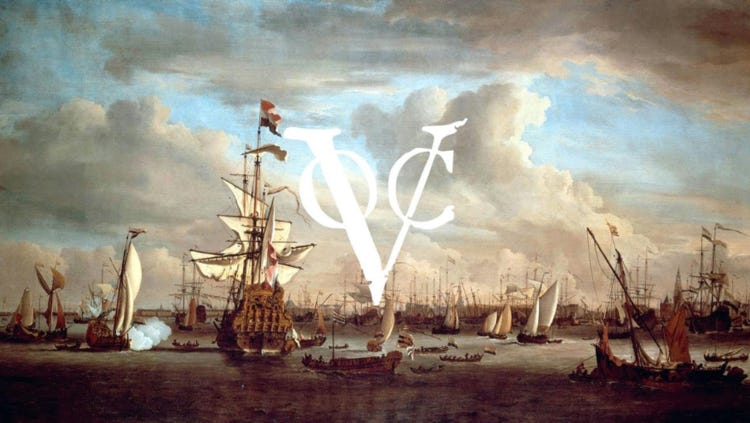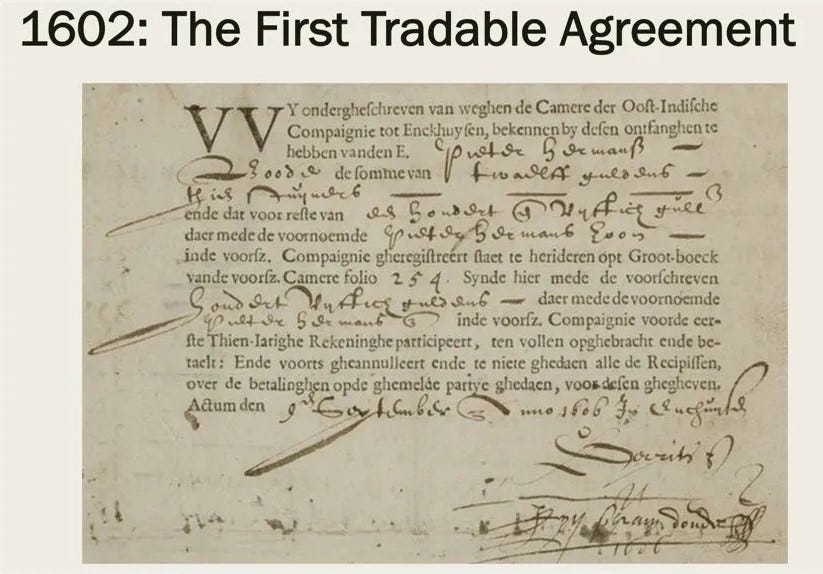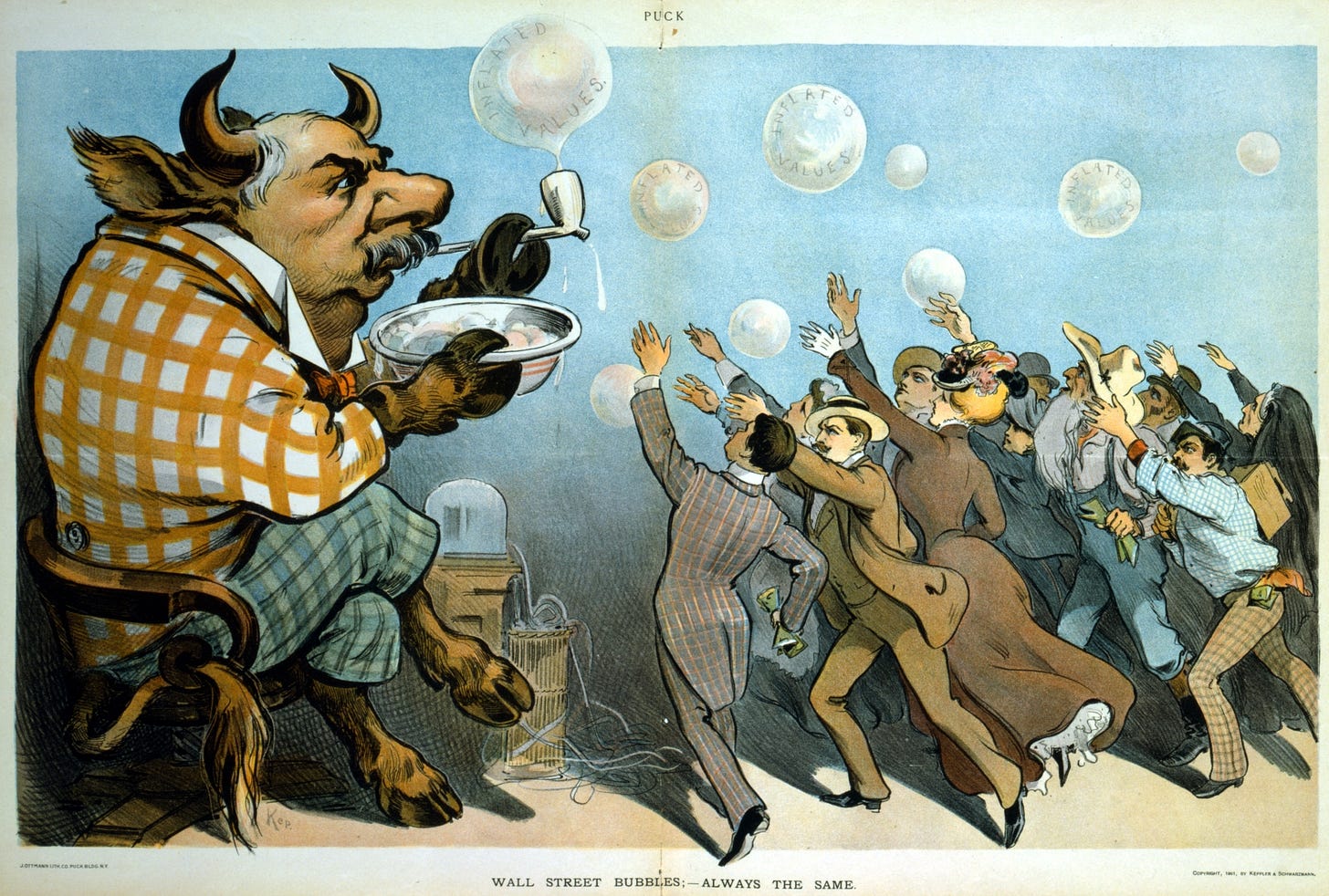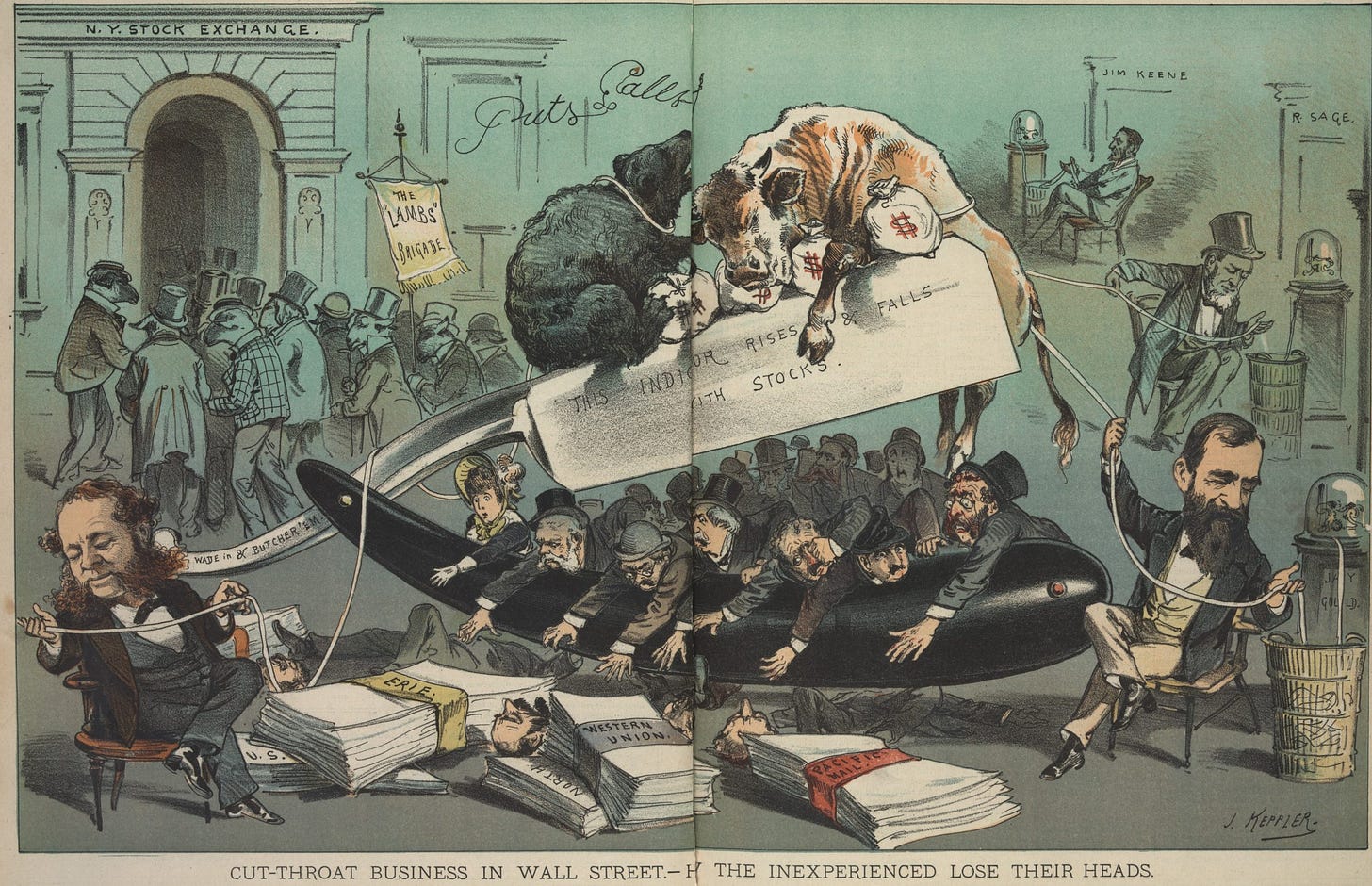Three Hundred and Thirty-Five years ago, in 1688, Joseph de la Vega wrote, “Confusion de Confusiones”, considered to be worlds first book on stock trading. What was unique about the book was that it focussed on a topic that was new, trading of shares in Amsterdam stock exchange, considered to be the oldest "modern" securities market in the world. It was established shortly after the establishment of the Dutch East India Company (VOC) in 1602, where the VOC shares began trading regularly in the secondary market.
We don’t know if the book was popular during its time or during the next two centuries. However, it kindled a lot of interest and became famous in the twentieth century, with the rising importance of the stock markets and the more frequent occurrences of boom and bust. A German translation came out in 1919, followed by a Dutch edition in 1939 and an abridged version in English in 1957 by Harvard Business School. But the book became famous and gained momentum after Financial Times published an article in 1995, where the editor picked “Confusión de confusiones” as one of the ten best books on investment ever written, describing it as a guide for modern investors. Every investor should know how the stock market worked in its original and purest form before venturing into the financial markets. And where better to find this than in a book that describes the dealings and people from the world’s oldest stock exchange?
A book, three and a half centuries old as a guide to modern investors!! So, what was the book about? Before we dive into the contents of the book, let us set some context.
World’s First IPO and Trading in Stocks
The Dutch East India Company (VOC) came up with its IPO in August 1602, a first of its kind in world history. It was open to all public, “All the residents of these lands, may buy shares in this Company.” announced an article in the company charter and subscribers could decide for themselves how much to invest, there was no minimum or maximum. There had been companies before the VOC that had issued shares but had private shareholders. What set apart the IPO of VOC was its public nature. Every Dutchman was invited to invest, a big deviation from past, where capital was raised from a small circle of private investors.
The company’s first charter was granted for 21 years, and since that seemed like eternity to lock someone’s money-up, they included a provision for the interim liquidation of the VOC, after ten years in 1612. At some point during the IPO process, the directors realized that ten years was also a long time and investors might be wary of committing their money for such an extended period. Therefore, they included an extra provision: “Conveyance or transfer [of shares] may be done through the bookkeeper of this chamber.” This provision meant that investors did not have to wait until 1612 but could sell their shares before to get their capital back. Initially the shares were only transferrable through the bookkeeper’s office. But eventually, almost 10 years later, Amsterdam stock exchange was established, a roofless courtyard in Amsterdam, providing more liquidity to the merchants for building ships and exploring profitable spice trade with the East Indies. The Dutch kept innovating, with the introduction of forward contracts, insurance, derivatives, short selling and eventually a ban on short selling, providing the first capital market regulation. At its peak the VOC was evaluated at 7.9 trillion dollars, which is indeed the most valuable enterprise of all time.
Short Selling and Forward Contracts.
Today, we take short selling for granted, betting against a company by borrowing the stock and selling it, buying it back later, when the price down and return to the lender. Remarkably, it was also a daily practice in early 17th-century Amsterdam. A gentleman called Isaac le Maire was the pioneer and at the center of this action. He was a very wealthy merchant and became a co-founder of the VOC. But he stepped down as a director in 1605 after a conflict with his colleagues over matter of money. In 1608, in probably the first instance of shareholder activism, he believed the company was making wrong decisions and since the directors were ignoring his concerns, he organized a bear raid. He founded a syndicate with nine other men, and they agreed to sell VOC shares for future delivery, shares they did not own. They were taking a short position. They put downward pressure on the share price by spreading rumours about the company. People really believed that the VOC was in bad shape and the price went down and when it did Le Maire and his syndicate sold more shares for future delivery, at an even lower price.
As Lodewijk Petram outlines in his wonderful book, The Worlds First Stock Exchange:
· “Le Maire and his syndicate used forward contracts for their bear raid. Selling borrowed shares would also have been an option but was more difficult to organize. Trading forwards was comparatively easy and all it took to strike a forward deal, was a written contract and it was not customary to ask for collateral. These forward deals were agreements that established that the parties would trade a VOC share at a particular time in the future at a price set at the moment that the transaction was entered into. They are comparable to modern-day futures contracts, but where futures are standardized contracts, each forward was negotiated individually. Forward trading was convenient to share dealers as no share was transferred, and there was no need to pay anything at the time the contract was signed. None of this happened until the contract’s end date. And even then, it was not necessary to transfer the share as traders could opt for a cash settlement, which would offset the price in the contract against the spot price at that moment.”
Handwritten forward contract of Johan Thijs in 1611. Isaac le Maire’s syndicate used similar contracts.
When the directors of VOC got wind of what Isaac le Maire and his syndicate were up to, they took immediate steps to counter it. It was very much in their interests that the share price did not drop too much, They submitted petitions to the highest administrative bodies in the Dutch Republic that, “vile practices” were being widely employed in the buying and selling of shares and asserted that this was all “very disadvantageous to the investors and particularly the many widows and orphans.” This worked and in February 1610, an edict banning practices such as that of Isaac le Maire and his syndicate was promulgated. It was a ban on naked short selling, or “blank selling”, as it was then called in the Netherlands. Blank sellers sold shares for future delivery while their accounts in the company’s share register were empty. Borrowing a share from a shareholder and selling it on the market would still have been allowed.
There were further developments related to options trading, straddles, and leverage. By middle of the 17th century, there were enough traders with sufficient experience to use these complicated instruments. These speculators were to be found regularly on the exchange and they knew exactly how the business worked, monitored the VOC share price closely, and were consequently in a very good position to assess whether trading an option was worthwhile or not. The speculators risk profile was different from that of the shareholders who were more interested in investing in Company shares for the long term. The speculators, on the other hand, tried to make money out of the fluctuations in the VOC share price.
So how big was the demand for VOC shares and how large was the activity on the Amsterdam stock exchange? Visual Capitalist published an infographic in 2017, comparing the market capitalization of VOC in 1637 with the twenty largest modern corporations.
Howmuch.net analyzed data and concluded that, while English South Sea Company and Mississippi Company were worth $4.5 and $6.8 trillion at the height of the stock market craze of 1720, the most valuable company of all time, however, was the VOC. According to them, it’s worth reached a staggering $8.28 trillion in 1637. Another website, Lovemoney.com further corroborated this: “The value of the company ballooned outrageously in 1634 after its ships carrying tulip bulbs sparked the infamous Tulip Mania in Holland. The value of the bulbs reached ridiculously high levels, pushing the company’s share price up 1,200%. Right before the bubble burst in 1637, the firm was worth 78 million Dutch guilders, which is $8.2 trillion (£6.3trn) in 2020 dollars, equivalent to the combined GDPs of Germany, the UK and France.”
The Book – Confusion de Confusiones
What Joseph de la Vega captured in his book was the phenomenon related to VOC highlighted above. Researchers have compared Vega’s work with current behavioral finance and proposed that, the book be considered the first precursor of modern behavioral finance. In addition to describing excessive trading, overreaction and underreaction, and the disposition effect, Vega vividly portrays how investors behaved 400 years ago and includes interesting documentation on investor biases, such as herding, overconfidence, and regret aversion.
Vega’s book is not about stock exchanges or economics or legal and financial analysis. It is more about human behaviour of people involved with trading stocks and is a description of the beginning of the activities and games of the stock exchange. Nobody by that time had tried to understand and describe this activity. Even in Amsterdam, there was no technical work about this frantic activity. Let us look at two quotations from the book:
· If one were to lead a stranger through the streets of Amsterdam and ask him where was, he would answer “among speculators,” for there is no corner where one does not talk shares.
· When the speculators talk, they talk shares; when they run an errand, the shares make them do so; when they stand still, the shares act like a rein; when they look at something it is shares that they see; when they think hard, the shares provide the content of their thoughts; if they eat, the shares are their food; if they meditate or study, they think of the shares; in their fever fantasies, they are occupied with shares; and even on the death bed, their last worries are the shares.
People of Amsterdam were talking about options, forward selling, quotations and prices, risk and speculation, all relating to the trade in the shares of VOC. Fortunes were made and lost, and the men who engaged in this trade were wholly in thrall to it.
The book is structured as dialogues between different people, a popular form of the time. There are three characters in Confusión de confusiones, two of them, a merchant and a philosopher, have heard about the trade in shares and sometimes even watch the traders, but they do not really understand how it works and are afraid to take part in it themselves. They call upon the assistance of an experienced shareholder, the third character. In four imagined dialogues, the shareholder explains to the others how trading is conducted, tells them about the different types of transactions, and warns them of the tricks and deceptions they must watch out for if they enter the fray. In one dialogue, the trader outlines the principles of operating in the stock trade.
Sounds familiar!!
In total there are four dialogues in the book. The first dialogue concerns the origin and etymology of the word “share,” the meaning and use of options (opsies) and the techniques performed by actors in the exchange. In the second dialogue, Vega discusses the volatility of prices and the reasons for this instability, events that cause changes in the behavior of buyers and sellers. The third dialogue considers contracts, specifically how participants agree to prices, when they sign the agreements and how they deliver the shares or merchandise to the buyer. The fourth and final dialogue considers the speculative aspects of this business, which he attributes to the diverse abilities of the actors but also to external influences (rumours or false news).
Let me highlight some important quotes from the dialogues:
· This enigmatic business which is at once the fairest and most deceitful in Europe. Even as it was the most fair and noble in all Europe, so it was also the falsest and most infamous business in the world.
· Vega considers the stock business a game of chance: This unique business is normally called a game. Why? I will personally call it ‘men’ because every man wants to play it. If in this game the one who most steals most wins, how can I be the best at stealing the humorous thing without giving the game all my time?
· It is necessary to paint with the tools of truth the means of deceiving the adversary. Innumerable men earn their living in its shadow. And those who are satisfied with the fruits and do not insist on pulling up the roots...will admit that they do pretty well in such business.
· Merchant: In this chaos of opinions, which one is the most prudent? - Shareholder: To go in the direction of the waves and not fight against the powerful current.
· Despite all these absurdities, this confusion, this madness, these doubts and uncertainties of profit, means are not lack-ing to recognize what political or business opinions are held by persons of influence. He who makes it his business to watch these things conscientiously, without blind passion and irritating stubbornness, will hit upon the right thing in numerable times, though not always.
· Therefore, it is not important that the basic value of the shares be practically nothing as long as there are other people willing to close their eyes and support those contradictions.
· One of de la Vega’s observations about the Amsterdam traders was that they were “very clever in inventing reasons” for a sudden rise or fall in stock prices. “The news is often of little value”, in the short run, the mood of the investors is what counts.
· Those playing the game merely for the sake of entertainment and not because of greediness are easily to be distinguished.
Anyone who has been investing in the stock market for a decent time will find the above statements a truth, but these were golden words written 350 years ago for an activity that started more than 400 years ago.
Surprised Again! – Boom, Bust and Investor Amnesia
· In science and technology, progress is cumulative, but in finance and investing, progress is cyclical
One of my all-time favourite books is, “Extraordinary Popular Delusions and Madness of the Crowds”, by Charles Mackay. Originally written in 1841, this classic has timeless lessons. One particular sentence keeps coming back to me and there is no better time to revisit it, than now
“Every age has its peculiar folly—some scheme, project, or phantasy into which it plunges, spurred on either by the love of gain, the necessity of excitement, or the mere force of imitation.”
Human behaviour has a habit of repeating in cycles, but every time we seem surprised at manias and panics. Joseph de la Vega, while being the first to articulate and record the irrational behaviour, over the past couple of centuries, various others have identified and warned about this. In the 1840s, the Scottish journalist Charles Mackay used his astute powers of observation to develop the antecedents of behavioral finance in his remarkable book, Extraordinary Popular Delusions and the Madness of Crowds. He chronicled various manias from Tulip, South Sea and Mississippi to other delusional behaviour over the ages such as, Alchemy, Witch hunting and Crusades. In his immortal observations:
· “We find that whole communities suddenly fix their minds upon one object, and go mad in its pursuit; that millions of people become simultaneously impressed with one delusion, and run after it. . . . Sober nations have all at once become desperate gamblers, and risked almost their existence upon the turn of a piece of paper. . . . Men, it has been well said, think in herds . . . go mad in herds, while they only recover their senses slowly, and one by one.”
Similarly, in 1896, Gustave Le Bon the French psychologist and sociologist, brilliantly caught the actions and moods of the crowd:
· “The sentiments and ideas of all the persons in the gathering take one and the same direction. . . . A collective mind is formed . . . presenting very clearly defined characteristics. The gathering has thus become . . . a psychological crowd.”
The most striking according to Le Bon was:
· “A crowd’s inability to separate the imaginary from the real: “A crowd thinks in images, and the image itself immediately calls up a series of other images, having no logical connection with the first. . . . It accepts as real the images evoked in its mind, though they most often have only a very distant relation with the observed fact. . . . Crowds being only capable of thinking in images are only able to be impressed by images.”
Contagion and crashes are a good starting point for understanding psychological behavior in the markets. One of the most remarkable characteristics of speculative manias is their similarity from period to period, even if hundreds of years apart. Each mania had sound beginnings and was built on a simple but intriguing concept but was then characterized by the almost complete abandonment of prudent principles that had been followed for decades, if not generations. People believed each bubble offered opportunities far more enticing than they had ever seen before. In each mania excessively risky actions were justified as prudent.
As David Dreman, in his book, Contrarian Investment Strategies – The Psychological Edge, observed:
· “In a bubble any torrid concept will work. Investors in each mania have believed and followed pied pipers. Though bubbles provide almost endless jubilation on the way up, the way down is like entering Dante’s eighth circle of Hell. In every bubble, once the crowd begins to realize how wildly overpriced the stocks it rushed into are, there is a scramble to escape. A horrific panic ensues as the image changes from euphoria to doom. Rumours always play a major role, at first of fortunes being made and of good things to come and then later of prophecies of doom. Finally, prices fall back to where they started off or lower. The curtain has dropped, and the riveting drama is over. Perhaps the most curious similarity of all is the sharp percentage drop from each high-water mark, on the order of 80 to 90 percent or more.”
The above statement is illustrated below nicely. Table 1-1 shows the price drops from their peaks of four of the classic bubbles in market history: Tulip Mania (1637), the Mississippi Bubble (1720), the South Sea Bubble (1720), and the crash of 1929. Table 1-2 shows the six major market bubbles in the United States between 1960 and 2009.
Final Words
If Bubbles, Booms, Busts, Manias and Panics occur periodically and if everyone knows about them, how does one explain their recurrence? Shouldn’t economists, steering the Titanic, have figured out by now how to watch for the equivalent of the floating iceberg?
Unfortunately, the prevailing wisdom touted by the economists, Efficient Market Hypothesis (EMH) goes against the grain of history and of course sheer common sense. EMH and its cousins, CAPM and MPT, in my opinion are, “Horseshit wrapped in a tin foil and sold as precious metal.” According to the high priests of the ivory tower, bubbles are rational. Prices are never out of whack and what might seem absurd is always justified by the actions of totally rational, non-emotional investors, who keep prices exactly where they should be. It has been proven again and again: The crash of 1987, LTCM in 1998, Dot Com bust of 2000 and GFC in 2008, that investors are not rational, and emotions accentuated by their beliefs and biases drive their actions. Dead and walking-dead economists have probably done more damage to investors wealth than anything else combined in the past five decades.
It is sad that, this still happens in a day and age when investors are probably the best educated in history, command state-of-the-art technology and instant communication, possess up-to-date nanosecond data and finest research money could buy. With all the tools of logical decision making better than ever, the outcomes seem to be getting worse.
History matters for investors. It has never been more important to understand financial history and psychology of markets and investors. They might not provide answers but will definitely inform us about why and how bubbles occur and how the same forces that generate bubbles influence our investment decisions in any kind of market.
The only edge we have is behavioural and psychological!
















nothing new under the sun.
Enjoyed reading this post. To me markets are like prohibition. I agree constant supervision, vigilance and limits are a way to stem the madness. If you try to enforce beyond a point the 'off line' or 'grey market' operators will thrive and the main purpose of the market could be put in jeopardy.